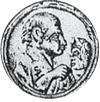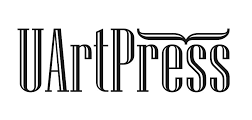Music and Art Sector in Pandemic. Croatian Example
DOI:
https://doi.org/10.46522/S.2022.S1.9Kulcsszavak:
Croatian Ministry of culture and MediaAbsztrakt
Putting in context conditions in which art, especially music and performing arts, exists in the time of pandemic, proportions and a possibility of achieving the goals from the New European Agenda for Culture will be analysed. Aiming to harness the full potential of culture to help build a more inclusive and fairer EU, supporting innovation, creativity and sustainable jobs and growth, increased cultural participation and building cohesive societies the role of music and performing arts will be highlighted. According to the GESAC study „Rebuilding Europe. The cultural and creative economy before and after the COVID-19 crisis“(January 2021), the performing arts are the most affected areas within the cultural and creative industries. For that reason, the Croatian Ministry of Culture and Media has adopted several measures which aim to help the cultural sector, particularly performing artists, during the Covid-19 crisis. During the 2 months, digital platforms have served as the only place of activity and sharing of cultural content, so Ministry has decided to open the Call for online activities as an additional source of financing. By reviewing the effectiveness of adopted measures it will be shown which new models of communication and cooperation have the potential to become a new cultural value in the future, as a consequence of the crisis. The new models in the form of distributed online content in the field of music and performing arts sector will be questioned in the context of cultural politics. An example of good practice in adapting the cultural sector to new circumstances, the project of students of Production at the Academy of Dramatic Arts in Zagreb, who designed the review of student plays in a completely new innovative format, the so-called KRADU 24, will be presented.
Hivatkozások
and Creativity. Available from: https://culture.ec.europa.eu/node/182.
BLAUKOPF, Kurt, 1982. Musik im Wandel der Gesellschaft: Grundzuge der Musiksoziologie, München – Zürich, Pieper.
FISCHER-LICHTE, Erika, 2010. Povijest drame: Razdoblja identiteta u kazalištu od antike do danas. Sv. 1: Od antike do njemačke klasike, Zagreb: Disput.
HRASTE-SOČO, Iva, 2013. Hrvatska – nacija kulture. Zagreb: Leykam International d.o.o.
Hrvatska enciklopedija, mrežno izdanje. Leksikografski zavod Miroslav Krleža, 2021. accessed 26 March 2022. http://www.enciklopedija.hr/Natuknica.aspx?ID=22246.
LUKIĆ, Darko, 2010. Kazalište u svom okruženju. Knjiga 1: Kazališni identiteti. Zagreb: Leykam International d.o.o.
PAVIS, Patrice, 2004. Pojmovnik teatra. Zagreb: Akademija dramske umjetnosti, Zagreb, Centar za dramsku umjetnost, Zagreb: Izdanja Antibarbarus d.o.o.
Pregled mjera za kulturni sektor, [no date]. min-kulture.gov.hr [online]. [Accessed 9 April 2022]. Available from: https://min-kulture.gov.hr/vijesti-8/mjere-za-pomoc-kulturnom-i-kreativnom-sektoru-uslijed-pandemije/mjere-ministarstva-kulture-i-medija-za-pomoc-kulturnom-i-kreativnom-sektoru-uslijed-pandemije/20182.
Rebuilding Europe. The cultural and creative economy before and after the COVID-19 crisis. GESAC, January 2021; https://www.rebuilding-europe.eu/
SENKER, Boris, 2010. Uvod u suvremenu teatrologiju. Zagreb: Leykam International, d.o.o.
WEBER, Max,1921. Die rationalen und soziologischen Grundlagen der Musik, München: Drei Masken Verlag.
ZIMMERMANN, Michael, 2002. Was ist Musik? in Europȁische Musikgeschichte, Band I (ed. Sabine Ehrmann-Herfort, Ludwig Finscher, Giselher Schubert), Kassel: Bȁrenreiter-Verlag Karl Vötterle GmbH&Co. KG.
Downloads
Megjelent
Hogyan kell idézni
Folyóirat szám
Rovat
License

This work is licensed under a Creative Commons Attribution 4.0 International License.

This work is licensed under a CC BY Creative Commons Attribution 4.0 International License, which permits any use, reproduction, distribution, self-archiving and citation of the work as long as the authors are credited. The complete bibliographical data of Symbolon Journal must also be indicated, which you can find in the How to cite section on this page. If possible, please also place a link leading to the original publication. Copyright of articles belongs to the authors.




